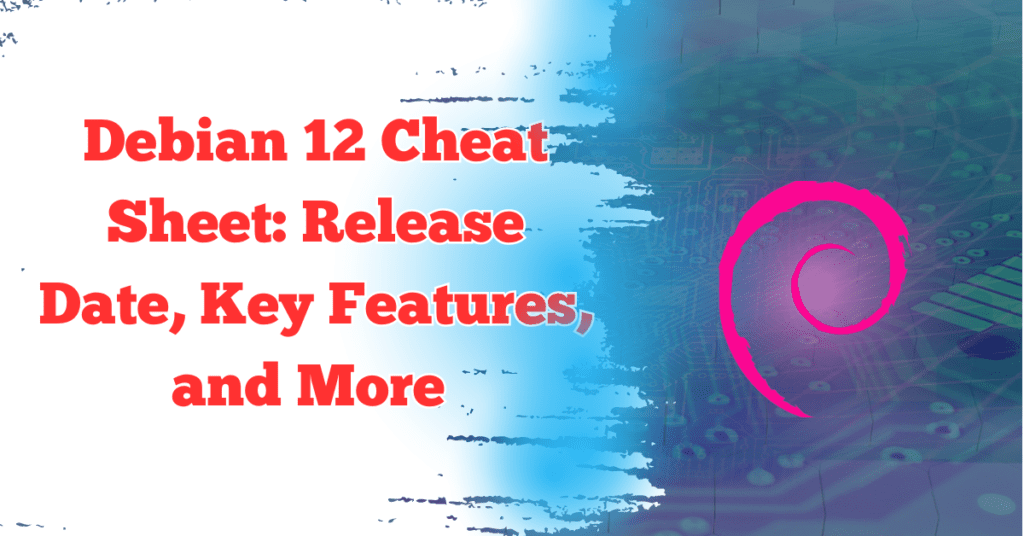Introduction
In the diverse world of Linux distributions, Arch Linux and Debian stand out for their unique philosophies and features. Arch Linux, known for its rolling release model and flexibility, appeals to experienced users who crave control and customization. Debian, on the other hand, is celebrated for its stability and extensive software repository, making it a popular choice for both servers and desktops. This article aims to provide a clear, balanced comparison of Arch Linux and Debian, exploring their key features, advantages, and drawbacks to help you determine which distribution best suits your needs.
Table of Contents
Overview of Arch Linux and Debian
Arch Linux
Arch Linux is a lightweight and flexible Linux distribution that follows the KISS (Keep It Simple, Stupid) principle. It is designed for users who prefer to build their systems from the ground up, allowing for a high degree of customization. Arch Linux uses a rolling release model, meaning that users receive continuous updates rather than waiting for major version releases. This approach ensures that users have access to the latest software and features.
Key Features:
- Rolling release model for continuous updates.
- Minimalist approach, providing a base system to build upon.
- Arch User Repository (AUR) offers a vast collection of user-contributed packages.
Debian
Debian is one of the oldest and most stable Linux distributions, known for its reliability and extensive package repository. It serves as the foundation for many other distributions, including Ubuntu. Debian is favored for its strong focus on stability and security, making it an ideal choice for servers and critical applications. It uses a more traditional release model, with stable, testing, and unstable branches to accommodate different user needs.
Key Features:
- Stable release model with long-term support.
- Extensive package repository with over 50,000 packages.
- Strong emphasis on free software and community-driven development.
Installation and Setup

Arch Linux
The installation process for Arch Linux is known for its complexity and requires a good understanding of Linux fundamentals. Users must manually partition their disks, configure their system, and install a base system before setting up a desktop environment. While this process can be daunting for beginners, it offers complete control over the system configuration.
Installation Tools and Documentation:
- The Arch Wiki is an invaluable resource, providing detailed guides and troubleshooting tips.
- The
archinstallscript simplifies some aspects of the installation but still requires user input.
Debian
Debian offers a more user-friendly installation process compared to Arch Linux. The Debian Installer provides a straightforward graphical or text-based interface, guiding users through the setup process. The installer handles disk partitioning, package selection, and system configuration, making it accessible for both beginners and experienced users.
Installation Tools and Documentation:
- Debian’s official installation guide and forums provide ample support.
- The installer includes options for different desktop environments and software selections.
Package Management
Arch Linux
Arch Linux uses Pacman as its package manager. Pacman is known for its simplicity and efficiency, handling software installation, updates, and dependency management seamlessly. The Arch User Repository (AUR) further extends the available software by allowing users to contribute and access packages not included in the official repositories.
Package Management Features:
pacmanfor official packages, with a focus on simplicity and speed.yayoraurmanas AUR helpers for easier management of user-contributed packages.
Debian
Debian employs APT (Advanced Package Tool) for package management, which is renowned for its robustness and ease of use. APT simplifies software installation, updates, and dependency resolution. Debian’s package repositories are vast, providing a wide range of software options for users.
Package Management Features:
aptfor handling package installation, upgrades, and dependency management.dpkgfor low-level package management tasks.
System Performance
Arch Linux
Arch Linux is designed for performance and efficiency. Its minimalist approach means that only essential services and software are running, which can result in faster boot times and lower resource usage. The rolling release model ensures that users benefit from the latest performance improvements and optimizations.
Performance Considerations:
- Minimalist design contributes to lower resource consumption.
- Continuous updates can introduce performance enhancements and new features.
Debian
Debian’s performance is stable and reliable, thanks to its well-tested packages and long-term support. While it may not always offer the latest software versions, Debian’s focus on stability ensures consistent performance. Users can optimize Debian systems for performance through various configurations and tweaks.
Performance Considerations:
- Stable and well-tested software ensures reliable performance.
- May require additional configuration for cutting-edge performance optimizations.
Community and Support
Arch Linux
Arch Linux has a strong and active community that provides extensive support through forums, IRC channels, and the Arch Wiki. The community’s focus on DIY and customization results in a wealth of shared knowledge and resources.
Community Support:
- Arch Wiki offers comprehensive documentation and troubleshooting.
- Active forums and IRC channels for community support.
Debian
Debian’s community is one of the largest in the Linux world, with a focus on stability and free software principles. The Debian community provides support through mailing lists, forums, and extensive documentation.
Community Support:
- Debian Wiki and mailing lists offer in-depth support and information.
- Active forums and IRC channels for real-time assistance.
Use Cases and Recommendations
Arch Linux
Arch Linux is recommended for advanced users who value customization and control. It is ideal for those who want to build their systems from scratch and stay on the cutting edge of software development. Arch Linux is well-suited for experienced users who enjoy tinkering and learning about the inner workings of their system.
Best Suited For:
- Advanced users and enthusiasts.
- Users who prefer a rolling release model and high customization.
Debian
Debian is well-suited for users who prioritize stability and reliability. It is an excellent choice for servers, desktops, and environments where long-term support and consistent performance are crucial. Debian’s extensive package repository and user-friendly installation process make it a good option for a wide range of users.
Best Suited For:
- Users who need a stable and reliable system.
- Server administrators and desktop users who prefer a well-supported environment.
Conclusion

Both Arch Linux and Debian offer distinct advantages and cater to different user needs. Arch Linux excels in flexibility and customization, making it a favorite among advanced users who appreciate a hands-on approach. Debian, with its focus on stability and extensive support, is ideal for users who seek a reliable and well-supported system. Choosing between these distributions depends on your preferences for control versus stability and your level of expertise.
FAQs
1. Which distribution is better for beginners?
- Debian is generally considered better for beginners due to its user-friendly installation process and extensive documentation.
2. Can Arch Linux be used for a server environment?
- Yes, Arch Linux can be used for servers, but its rolling release model may be less suitable for production environments that require long-term stability.
3. How does the package management system difference between Arch Linux and Debian?
- Arch Linux uses Pacman and the AUR for package management, focusing on simplicity and cutting-edge software. Debian uses APT, which is robust and stable with a vast repository.
4. Is Arch Linux more secure than Debian?
- Security depends on configuration and maintenance. Debian’s long-term support and stability contribute to its security, while Arch Linux’s rolling updates provide the latest security patches.
5. Can Debian be customized like Arch Linux?
- Debian offers customization, but it is less focused on minimalism compared to Arch Linux. Arch provides a more hands-on approach to system configuration and optimization.
Research Table: Arch Linux vs Debian
| Feature | Arch Linux | Debian |
|---|---|---|
| Philosophy | KISS (Keep It Simple, Stupid) | Stability and free software principles |
| Release Model | Rolling release | Stable, Testing, Unstable branches |
| Installation | Manual, requires user input | Guided, graphical/text-based installer |
| Package Manager | Pacman, AUR | APT, dpkg |
| System Performance | Minimalist, high customization | Stable, requires additional configuration for optimization |
| Community Support | Active forums, IRC, Arch Wiki | Large community, Debian Wiki, mailing lists |
| Best Suited For | Advanced users, customization enthusiasts | Users needing stability, server administrators |



Pingback: Zorin OS vs. Elementary OS: Which is the Best Lightweight Linux Distro for You? -